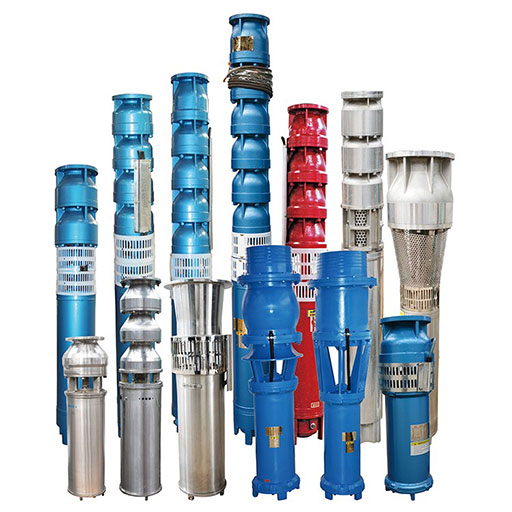Service
08:00~24:00(Beijing)
Water Pump Direct Sale
Professional Submersible Pump Manufacturer
The electrical submersible pump, typically called an ESP, is an efficient and reliable artificial-lift method for lifting moderate to high volumes of fluids from wellbores. These volumes range from a low of 150 B/D to as much as 150,000 B/D (24 to 24,600 m3/d). Variable-speed controllers can extend this range significantly, both on the high and low side. The ESP’s main components include:
Multistaged centrifugal pump
Three-phase induction motor
Seal-chamber section
Power cable
Surface controls
The components are normally tubing hung from the wellhead with the pump on top and the motor attached below. There are special applications in which this configuration is inverted.
Submersible pumps are used for a wide range of applications. If you have a small pump around your property or a well pump it is probably a submersible pump. Submersible pumps are also common in sewage applications, raw water pumping applications, and to remove storm water from structures like parking garages.

A submersible pump is a type of centrifugal pump that operates while completely submerged in the liquid it is pumping.
A centrifugal pump combines the hydraulic design of an end-suction pump with a submersible motor. Submersible pumps are always of the close-coupled type – meaning that the impeller mounts directly on the end of the motor shaft, and the pump casing attaches directly to the motor frame.
Submersible pump motors are designed with a water-cooled jacket. In most cases, the liquid being pumped is circulated around the motor to provide cooling for the motor. The internal parts of the motor are protected by a water-tight enclosure, which prevents the entry of any liquid. In addition, most larger submersible pumps include a sensor placed between the pump and motor which senses when the liquid has gotten past the motor seals and prevents the unit from further operation until repairs have been made.
The rest of the system includes a surface control package and a three-phase power cable running downhole to the motor. Because of the ESP’s unique application requirement in deep, relatively small-bore casings, the equipment designer and manufacturer are required to maximize the lift of the pump and the power output of the motor as a function of the diameter and length of the unit. Therefore, the equipment is typically long and slender. The components are manufactured in varying lengths up to approximately 30 ft, and for certain applications, either the pump, seal, or motor can be multiple components connected in series.
Once a submersible unit has correctly been sized and its op- eration properly monitored, the installation becomes relatively trouble free and economical. The sizing procedures incorpo- rated in this section represent one of the methods of sizing submersible installations and do not necessarily represent all methods used in the submersible industry. overload or underload the motor, or drawdown the well at a rapid rate which may result in formation damage. On the other extreme, the pump may not be large enough to provide the desired production rate.
Too often data from other wells in the same field or in a nearby area is used, assuming that wells from the same pro- ducing horizon will have similar characteristics. Unfortunately for the engineer sizing the submersible installations, oil wells are much like fingerprints, that is, no two are quite alike.